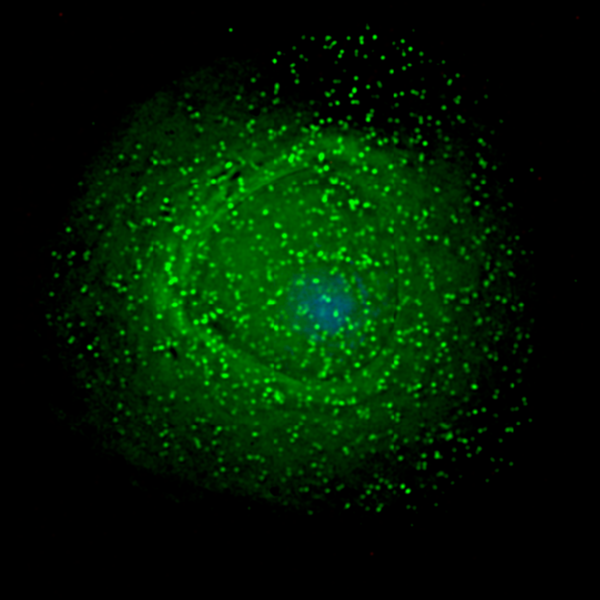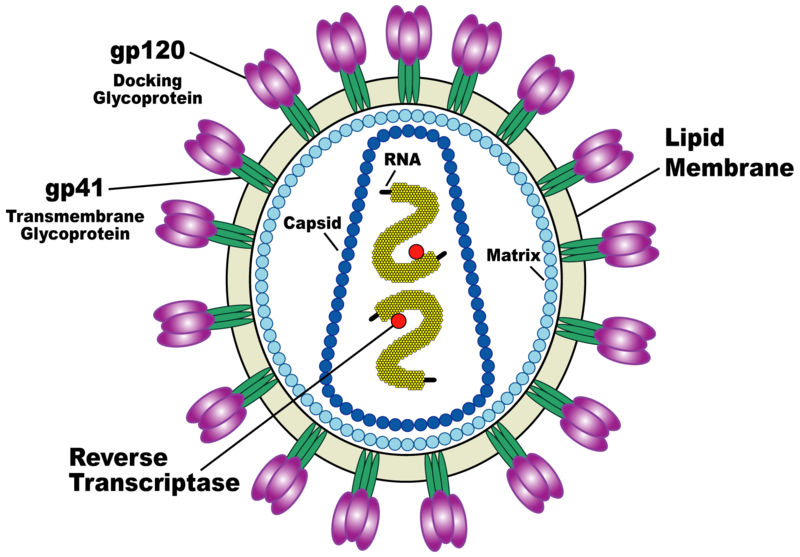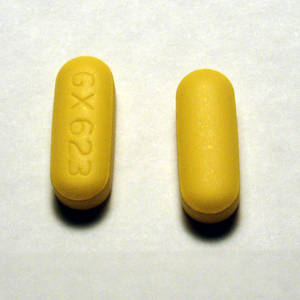Assembling HIV - How HIV uses your own cellular mechanics
Interview with
Kat - HIV is the agent that causes AIDS and is responsible for probably the worst pandemic that human kind has ever encountered. According to UNAIDS, there were up to 36 million people living with the virus in 2008 and in that same year, there were about 7,500 new HIV infections occurring every single day, and about 7,000 people dying of HIV related illnesses every day. If we're to halt the spread of this disease, we need to understand the detailed workings of this virus, in order to develop new drugs and vaccines, and one scientist who's working on how the virus hijacks our cells is Mark Marsh from University College London who joins us. Hello, Mark.
Mark - Hello, Kat.
Kat - Hello. Now, what I'd really like to find out from you is, what is HIV? How do people catch it? How does it get into our cells? How does it multiply? Tell us about HIV, what's it like?
 Mark - Well, HIV is a virus of the retrovirus family. It's a member of the group of so-called 'lentiviruses.' This is a subfamily of retroviruses. And all retroviruses have the common feature that their genome is a piece of RNA. Normally, lentiviral particles will package two copies of that genomic RNA, and the feature of these viruses is that once they've penetrated a host cell, they carry an enzyme in the virus particle that can copy the RNA into DNA. And that DNA can then be targeted to the cell nucleus and it can be integrated into the genome of the host cell, so it becomes an integral part of the genetic composition of the host cell. These particles are small. You can imagine them to be about the size of a football compared to Wembley Stadium or an orange on the surface of a circus tent, and the RNA genome has to be wrapped up within a protective layer for transmission from cell to cell, and that layer in the case of retroviruses and lentiviruses is actually a piece of membrane derived from the host cells. So it's exactly the same material that lines the surface of cells and what has to happen during the transmission phase is that viruses have to be put together within an infected cell so they have to assemble, and form this membrane around their genetic material. They then are transferred to a new target cell. They have to recognise that target cell by docking to receptors, and then they undergo a so-called 'fusion reaction' where the membrane of the virus fuses with the target cell membrane and that inserts that RNA then into the target cell where the whole process of that replication then proceeds.
Mark - Well, HIV is a virus of the retrovirus family. It's a member of the group of so-called 'lentiviruses.' This is a subfamily of retroviruses. And all retroviruses have the common feature that their genome is a piece of RNA. Normally, lentiviral particles will package two copies of that genomic RNA, and the feature of these viruses is that once they've penetrated a host cell, they carry an enzyme in the virus particle that can copy the RNA into DNA. And that DNA can then be targeted to the cell nucleus and it can be integrated into the genome of the host cell, so it becomes an integral part of the genetic composition of the host cell. These particles are small. You can imagine them to be about the size of a football compared to Wembley Stadium or an orange on the surface of a circus tent, and the RNA genome has to be wrapped up within a protective layer for transmission from cell to cell, and that layer in the case of retroviruses and lentiviruses is actually a piece of membrane derived from the host cells. So it's exactly the same material that lines the surface of cells and what has to happen during the transmission phase is that viruses have to be put together within an infected cell so they have to assemble, and form this membrane around their genetic material. They then are transferred to a new target cell. They have to recognise that target cell by docking to receptors, and then they undergo a so-called 'fusion reaction' where the membrane of the virus fuses with the target cell membrane and that inserts that RNA then into the target cell where the whole process of that replication then proceeds.
Kat - So let's get this straight. HIV is smuggling itself into our DNA then stealing our proteins and membranes to coat itself, and then put itself into more cells.
Mark - Absolutely. These viruses are incredibly simple. They have just nine open reading frames, so nine genes that encode 15 proteins, and that means then that they have to rely very heavily on host cell machineries to mediate their replication. Recent screens which are now technically possible have identified in the order of about 300 cellular proteins that are required to complete the viral replication cycle. So yes, they're using all sorts of machinery within the cell to accomplish their replication.
Kat - Now, to my mind, that makes HIV sound quite weak that it might have a lot of Achilles heels and that we could just remove some of these proteins that it needs, and then it wouldn't be able to replicate in our cells, and then we'd be able to treat it. What makes it so difficult to treat? Why can't we just knockout a few proteins and then it can't its thing anymore?
Mark - Well you're absolutely right and in fact, over the years, since the discovery of HIV, there's been very effective development of drugs that target key proteins encoded by the virus. So for example, the reverse transcriptase that copies RNA to DNA, the integrase that allows the virus to integrate its genome into the host cell DNA. Those enzymes have been worked on extensively and drugs have been developed that will inhibit viral replication in infected cells. The problem is, it's possible for the virus to mutate its way around those drugs so that they no longer become effective. But what's happened over the last few years is the realisation that perhaps, by understanding more about the cellular machinery that's involved in viral replication, those cellular proteins may be possible targets for drug development as well. And that notion has sort of developed from a state previously where it was considered that host cell targets were really not on because there was likely to be damage to the host organism. But I think now, there's a realisation that those can be realistic targets. And so, by trying to understand in more detail how these host cell components are used, it may then be possible to develop drugs or a whole new repertoire of drugs that could be used for - not only HIV, but a variety of other viruses.
 Kat - As you mentioned earlier, HIV is slightly unusual in that it converts its genome from RNA which is what we normally associate with being a message into DNA and puts that into human cells. With many viruses that infect us like the cold that I've currently got, my immune system is getting rid of the viruses and then that infection is gone. How challenging is it then, when we think about HIV and about treating HIV, that it does leave its genome within our own genome?
Kat - As you mentioned earlier, HIV is slightly unusual in that it converts its genome from RNA which is what we normally associate with being a message into DNA and puts that into human cells. With many viruses that infect us like the cold that I've currently got, my immune system is getting rid of the viruses and then that infection is gone. How challenging is it then, when we think about HIV and about treating HIV, that it does leave its genome within our own genome?
Mark - Well it's not just a matter of the virus having the ability to integrate into a host cell DNA, but the HIV and related viruses, the simian viruses, and so forth are targeting the very cells which would normally combat a viral infection. So these viruses are targeting so-called T-lymphocytes, white blood cells, which are absolutely essential for mounting effective immune responses; and they also target cells of the monocyte, macrophage, dendritic cell lineage. And those cells are again key for initiating and driving immune responses in infected individuals. So, whereas a cold virus will infect the epithelium, the cells that line the nose and the pharynx, and the immune system can be then brought to bear on those infected cells, in the case of HIV, the virus is targeting the very cells that would normally fight the infection.
Kat - Cunning stuff. So tell us a little bit about your work. What aspect of HIV are you studying and what do you hope to lead to in the future? New treatments, that kind of thing?
 Mark - Well we, for a long time, have been interested in the mechanisms through which viruses in general get into cells, the way they subvert cellular machineries to get into a target cell, and also the processes by which they then undergo assembly within those infected cells to mediate their exit. Nowadays, HIV is actually one of the best model viruses for studying those types of processes because so much research has gone into HIV over the last 15, 20 years that there's huge numbers of reagents available, lots of information available about receptors and components, etcetera that are essential. And so, HIV becomes a very useful model for these sorts of processes. But what we would really like to understand is the integrated way in which the virus recruits machinery of the target cell in order to mediate its replication. And if we can understand that in sufficient detail, then we can perhaps set about developing the sorts of novel drugs that I mentioned earlier to provide new repertoires of reagents to fight these viruses. So we're interested in the processes of virus assembly, how the virus gets released from cells, and then how it finds new target cells, gets taken up by those target cells, and reinitiates the whole cycle of replication.
Mark - Well we, for a long time, have been interested in the mechanisms through which viruses in general get into cells, the way they subvert cellular machineries to get into a target cell, and also the processes by which they then undergo assembly within those infected cells to mediate their exit. Nowadays, HIV is actually one of the best model viruses for studying those types of processes because so much research has gone into HIV over the last 15, 20 years that there's huge numbers of reagents available, lots of information available about receptors and components, etcetera that are essential. And so, HIV becomes a very useful model for these sorts of processes. But what we would really like to understand is the integrated way in which the virus recruits machinery of the target cell in order to mediate its replication. And if we can understand that in sufficient detail, then we can perhaps set about developing the sorts of novel drugs that I mentioned earlier to provide new repertoires of reagents to fight these viruses. So we're interested in the processes of virus assembly, how the virus gets released from cells, and then how it finds new target cells, gets taken up by those target cells, and reinitiates the whole cycle of replication.
Kat - It just sounds incredible. It sounds like a whole factory being hijacked. You know, a factory that makes something like nice classical music CDs, being hijacked to make Justin Beiber CDs. What have your leads been so far? Where are we heading with your kind of research in the future?
Mark - Well, one of the things that we've been working on together with colleagues in the States is that in the envelope proteins of these viruses, these are the proteins that are responsible for docking onto target cells, on the cellular side of membrane, in the cytoplasmic side, there's very conserved signals which tell that protein where to go in an infected cell. It turns out that if you mutate those signals in animal models, you completely abrogate pathogenesis. The animals will still get infected, but they're able to mount immune responses that control the virus. So we're very excited. We know what the cellular machinery is that binds those signals. And now, if we can now start to understand more about the nature of that interaction, perhaps then we can target those sites of interaction for novel drug development. But of course, this is just one specific signal and the virus will have many of those. So, the more we can find out, the more options we'll have.









Comments
Add a comment